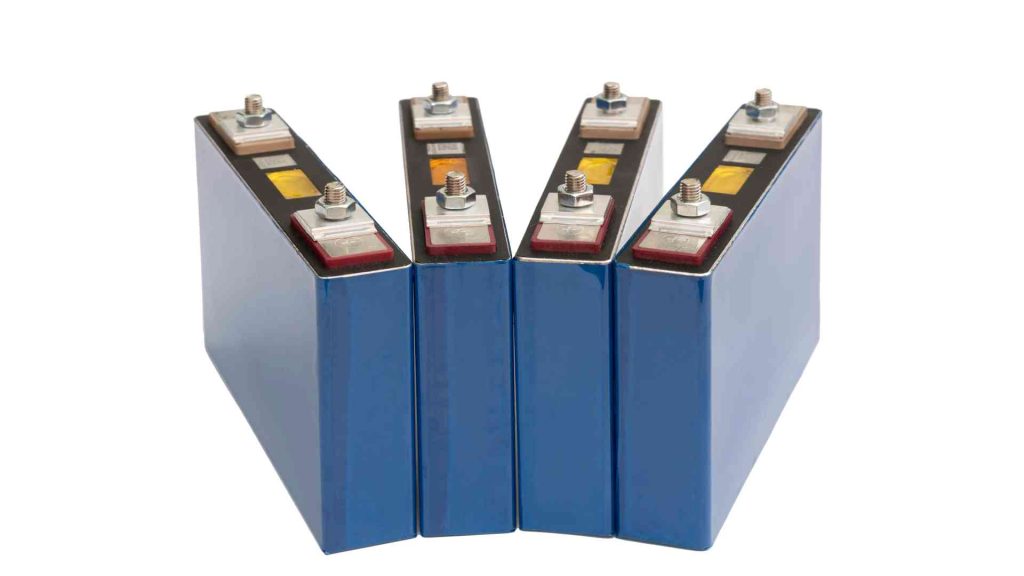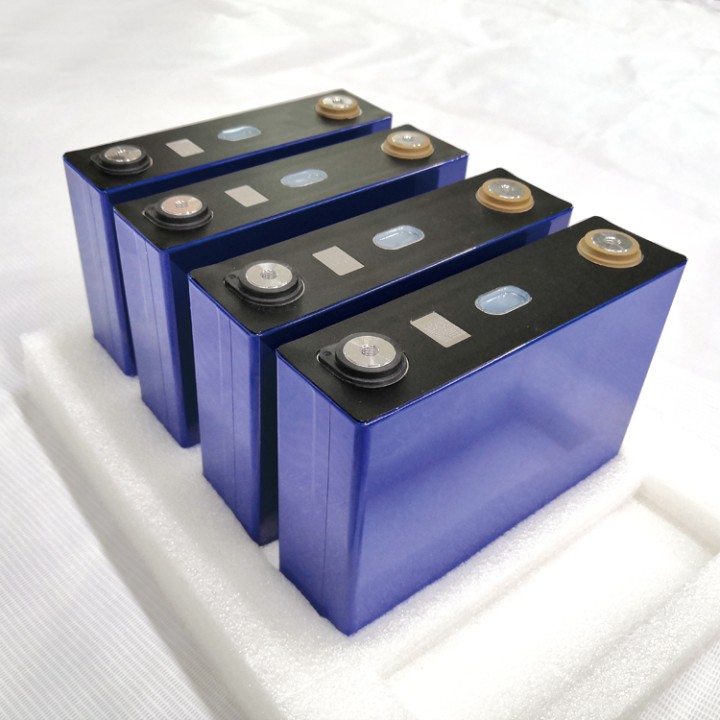LiFePO4 battery better than lithium?
People are debating whether LiFePO4 batteries are better than regular lithium-ion batteries for storing energy. These technologies are pivotal for various applications, from electric vehicles to renewable energy storage systems. This article delves into the differences between LiFePO4 and lithium-ion batteries, examining their benefits, drawbacks, and ideal use cases.
Understanding Battery Chemistry
Before diving into the comparison, it’s crucial to understand the chemistry behind these batteries.
What is a Lithium-Ion Battery?
Lithium-ion batteries can be recharged. Lithium ions move from one side to the other while using the battery and return when charging it.
They are widely used due to their high energy density and longevity. These batteries have become the standard for most portable electronics and electric vehicles due to their efficiency and performance. However, their chemistry can sometimes lead to safety concerns, such as overheating and potential for fire.
Types of Lithium-Ion Batteries
- Types of lithium-ion batteries:Lithium Cobalt Oxide (LCO)Lithium Manganese Oxide (LMO)Lithium Nickel Manganese Cobalt Oxide (NMC)Lithium Nickel Cobalt Aluminum Oxide (NCA)
- Each type has varying chemistries and properties
- Different balances of energy density, safety, longevity, and cost
- LCO batteries have high energy but low safety
- NMC batteries are safer and have good performance
What is a LiFePO4 Battery?
LiFePO4 stands for lithium iron phosphate. This lithium-ion battery uses iron phosphate as the cathode material, which makes it safer and last longer. LiFePO4 batteries have a lower tendency to overheat and are considered safer than other lithium-ion chemistries.
Lithium-ion batteries are gaining popularity for storing energy in electric buses and home energy systems. This is because they have a long lifespan.
Chemistry of LiFePO4 Batteries
- Iron phosphate is used for the cathode in LiFePO4 batteries
- Graphite is used for the anode in LiFePO4 batteries
- The composition leads to a stable chemical structure
- Reduced risk of thermal runaway
- Materials used are abundant and less toxic
- Environmentally friendly
- Longer cycle life due to iron phosphate chemistry
- Can handle more charge-discharge cycles before degrading

Performance Comparison
Energy Density
Energy density refers to the amount of energy stored in a given system or space per unit volume. Traditional lithium-ion batteries typically have higher energy densities compared to LiFePO4 batteries. This makes them ideal for applications where space and weight are critical factors, such as smartphones and laptops. However, the higher energy density comes at the cost of reduced safety and shorter cycle life.
- LiFePO4 batteries have lower energy density compared to other types
- This translates to storing less energy for the same volume
- Trade-off includes significant increase in safety and longevity
- Lower energy density can be a drawback in applications with limited space
- In electric vehicles, bulkier batteries affect design and weight distribution
Cycle Life
Cycle life is how many times a battery can be charged and discharged before its capacity decreases. This decrease happens when the battery’s capacity reaches a certain percentage of its original capacity. LiFePO4 batteries generally have a longer cycle life, often exceeding 2000 cycles. In contrast, conventional lithium-ion batteries usually offer around 500-1000 cycles. This longer cycle life translates to reduced replacement costs and less environmental waste.
- LiFePO4 batteries have extended cycle life
- Ideal for applications with frequent charge and discharge cycles
- Suitable for renewable energy storage systems and electric buses
- Cost savings from fewer replacements and maintenance
- Higher initial investment can be offset over time
- Consistent performance ensures reliability in critical applications
Safety
Safety is a paramount concern when it comes to battery technology. LiFePO4 batteries are inherently safer than traditional lithium-ion batteries. The iron phosphate chemistry is more stable and less prone to thermal runaway, which can lead to fires and explosions. This makes LiFePO4 batteries a preferable choice for applications requiring high safety standards, such as residential energy storage.
- Traditional lithium-ion batteries have higher energy densities but are more prone to overheating and thermal runaway.
- Additional safety measures like cooling systems and protective circuitry are required to mitigate these risks, increasing cost and complexity.
- LiFePO4 batteries can operate safely with simpler and cheaper safety mechanisms.
- LiFePO4 batteries are more reliable for long-term use compared to traditional lithium-ion batteries.
Temperature Performance
Temperature performance is another critical factor in comparing these batteries. LiFePO4 batteries perform better at higher temperatures without degrading as quickly as traditional lithium-ion batteries. This makes them suitable for environments with extreme temperature variations. On the other hand, traditional lithium-ion batteries can suffer from reduced performance and shorter lifespan when exposed to high temperatures.
- In colder climates, both types of batteries may experience reduced efficiency
- LiFePO4 batteries are more robust and less affected by temperature fluctuations
- Ideal for outdoor applications and regions with harsh weather conditions
- Maintain performance across a broader temperature range
- Adds to the versatility and reliability of LiFePO4 batteries
Environmental Impact
Raw Materials
The materials used in LiFePO4 batteries are generally less toxic and more abundant than those in traditional lithium-ion batteries. Lithium-ion batteries often use cobalt, which is not only scarce but also poses significant ethical and environmental concerns related to mining practices. The extraction of cobalt has been linked to severe human rights violations and environmental degradation.
- LiFePO4 batteries use iron and phosphate, readily available and environmentally benign materials
- Reduced reliance on scarce and problematic materials
- More sustainable choice with stable pricing and supply chains
- Decreased risk of shortages and price spikes
Recycling
Both types of batteries can be recycled, but the processes and efficiency can vary. LiFePO4 batteries are easier to recycle due to their more stable chemistry and less hazardous materials. The simpler recycling process results in lower costs and less environmental impact. Additionally, the longer cycle life of LiFePO4 batteries means they need to be recycled less frequently, further reducing their overall environmental footprint.
- Traditional lithium-ion batteries with cobalt are difficult and expensive to recycle
- Hazardous materials in these batteries can lead to environmental risks if not handled properly
- Recycling efficiency for these batteries needs improvement
- Advancements in battery recycling could help address environmental concerns
Lifecycle Environmental Impact
The overall lifecycle environmental impact of a battery includes its production, usage, and disposal phases. LiFePO4 batteries, with their longer cycle life and safer materials, generally have a lower environmental impact over their lifecycle compared to traditional lithium-ion batteries. The reduced need for replacements and lower toxicity contribute to a more sustainable energy storage solution.
Traditional lithium-ion batteries, while offering higher energy densities, often have a higher environmental impact due to the extraction of scarce materials like cobalt and the challenges associated with their recycling. Efforts to develop more sustainable chemistries and improve recycling processes are crucial to reducing the environmental footprint of these batteries. As the demand for energy storage grows, the environmental sustainability of battery technologies will become increasingly important.
Cost Considerations
Upfront Costs
LiFePO4 batteries tend to be more expensive upfront compared to traditional lithium-ion batteries. This higher initial cost can be a barrier for consumers and industries looking to adopt this technology. The materials and manufacturing processes for LiFePO4 batteries are generally more costly, contributing to the higher price tag.
However, the higher upfront cost is often justified by the long-term benefits, such as increased safety and longer cycle life. For applications where these factors are critical, the investment in LiFePO4 batteries can be worthwhile. Understanding the specific needs and budget constraints of your application is essential in determining whether the initial investment is feasible.
Long-Term Savings
Despite the higher initial cost, LiFePO4 batteries often prove to be more cost-effective in the long run. Their longer cycle life and enhanced safety can lead to fewer replacements and lower maintenance costs over time. The reduced need for frequent replacements translates to significant cost savings, especially in applications with high usage rates.
Additionally, the lower risk of thermal runaway and associated safety incidents can result in lower insurance and safety management costs. For large-scale energy storage systems, the long-term financial benefits of LiFePO4 batteries can outweigh the initial investment. Analyzing the total cost of ownership over the battery’s lifespan is crucial in making an informed decision.
Cost Trends
As the production of LiFePO4 batteries scales up, the costs are expected to decrease. Advances in manufacturing technologies and economies of scale can lead to more competitive pricing. The growing demand for safer and longer-lasting energy storage solutions is driving investment in LiFePO4 technology, which can further reduce costs.
Traditional lithium-ion batteries have already benefited from large-scale production and established supply chains, making them more affordable upfront. However, as the market shifts towards more sustainable and safer battery technologies, LiFePO4 batteries are likely to become more cost-competitive. Keeping an eye on market trends and technological advancements can help anticipate future cost developments.
Use Cases
Electric Vehicles
In electric vehicles, the choice between LiFePO4 and traditional lithium-ion batteries often depends on the specific requirements of the vehicle. LiFePO4 batteries are ideal for applications where safety and longevity are prioritized over energy density. For example, electric buses and delivery vehicles, which require durable and safe energy storage solutions, benefit from the extended cycle life and stable performance of LiFePO4 batteries.
- Traditional lithium-ion batteries may be more suitable for high-performance sports cars
- Higher energy density allows for a lighter and more compact battery pack
- Understanding the balance between safety, performance, and cost is crucial in selecting the right battery technology for electric vehicles
Renewable Energy Storage
For renewable energy storage systems, LiFePO4 batteries are often the preferred choice due to their long cycle life and enhanced safety features. They can handle the frequent charge and discharge cycles associated with solar and wind energy storage more efficiently than traditional lithium-ion batteries. The stability and reliability of LiFePO4 batteries make them ideal for residential and commercial energy storage systems.
- Energy storage is crucial for maintaining a consistent power supply from renewable sources.
- Reliable energy storage is especially important in off-grid and remote applications.
- The increasing use of renewable energy technologies is creating a need for durable and long-lasting battery solutions such as LiFePO4.
Consumer Electronics
In consumer electronics, traditional lithium-ion batteries are more commonly used due to their higher energy density and lower initial costs. These batteries are ideal for devices that require compact, lightweight power sources, such as smartphones and laptops. The high energy density allows for longer usage times and more powerful performance in a small form factor.
- Safety concerns and shorter cycle life are drawbacks in consumer electronics
- Ensuring proper thermal management and protective measures is essential
- Opportunities may arise to integrate safer and more durable battery chemistries into consumer electronics
- Balancing performance with safety is crucial as technology evolves
Industrial Applications
Industrial applications often require robust and reliable energy storage solutions, making LiFePO4 batteries an attractive option. The enhanced safety and longer cycle life make them suitable for heavy-duty machinery, backup power systems, and grid stabilization. The ability to operate under harsh conditions and withstand frequent charge-discharge cycles ensures consistent performance in industrial settings.
- Traditional lithium-ion batteries commonly used in industrial applications
- LiFePO4 batteries preferred for their enhanced safety and durability
- Important to assess energy storage requirements and operational conditions when choosing battery technology for industry
Marine and Aerospace Applications
Marine and aerospace applications demand high-performance and reliable energy storage solutions. LiFePO4 batteries, with their stable chemistry and long cycle life, are well-suited for these demanding environments. The enhanced safety features reduce the risk of thermal runaway, making them a safer choice for marine vessels and aircraft.
- Traditional lithium-ion batteries can be used in applications where weight and space are critical
- LiFePO4 batteries offer increased safety and durability compared to traditional lithium-ion batteries
- The choice of battery technology in marine and aerospace applications depends on performance, safety, and weight considerations
